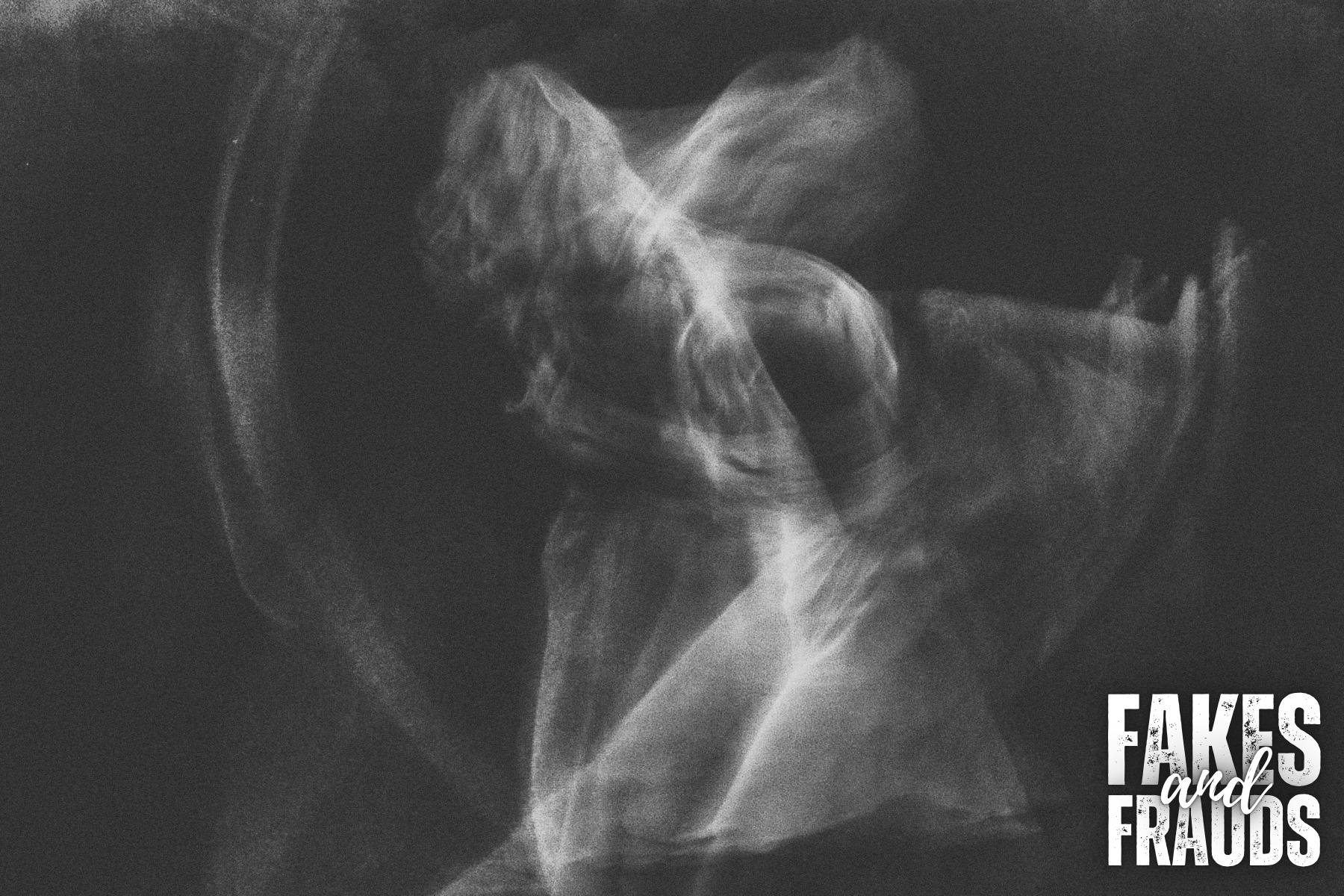Ghost photography — the noble art of aiming a poorly calibrated camera at thin air, misinterpreting every smudge, blur, and random dust mote as proof of life after death, and charging ten bucks a pop for the privilege.
Clearly, nothing captures the triumphant mediocrity of human ambition quite like the notion that eternal souls — beings of unimaginable wisdom and power — would choose to manifest themselves not through profound cosmic signs, but by photobombing your uncle’s awkward Sears portrait with a misty blob that looks like a sneeze caught on film.
The entire absurd spectacle began in the 19th century — the golden age of spiritualism, pseudoscience, and top hats worn unironically. Some enterprising gentlemen realized that if you charged grieving families enough and shuffled them into a photography studio smelling faintly of wet wool and bad dentistry, you could double-expose a glass plate and produce a charmingly translucent “spirit” hovering behind dear old Mother in her best black gown.
Was the ghost slightly out of proportion? Maybe floating suspiciously in the drapes? Possibly wearing the same expression as a stock image from last Tuesday’s shoot? Details. The bereaved weren’t paying for realism. They were paying for comfort, and comfort, it turns out, is best served blurry and overpriced.
Fast-forward to today, and nothing — absolutely nothing — has changed. We’ve upgraded from daguerreotypes to shaky iPhone footage, but the game is exactly the same. Take a photograph in poor lighting conditions. Get a little lens flare. Maybe catch the reflection of someone’s watch or a rogue housefly doing a kamikaze run past the flash. Congratulations: you have captured a portal to the afterlife, assuming you squint hard enough and want to believe badly enough to hammer your common sense into a fine mist.
And let’s not pretend this is happening by accident. Modern “ghost hunters” practically wet themselves over orbs, streaks, and random patches of overexposure, brandishing them like Nobel Prizes instead of the photographic garbage they actually are.
Paranormal tours sell spirit photography packages, solemnly instructing tourists to snap dozens of pictures in musty basements and then spend twenty minutes “analyzing” every stray dust particle for signs of Uncle Barry reaching out from the Great Beyond. Television shows dedicate entire segments to magnifying barely visible smudges with dramatic music and breathless narration, as if a fuzzy white blob near a radiator is proof positive that your grandmother still really cares about your unfinished taxes.
The truth, as usual, is far less glamorous. Light bounces. Dust floats. Bugs exist. Fingers slip into frames. Camera sensors have limitations. These are not flaws of photography. They are flaws of perception — human beings so desperate to be reassured, to matter, to touch something beyond themselves, that they will declare war on reality itself if it means seeing what they want to see.
Spirit photography has never proven the existence of ghosts. What it has proven — magnificently, exhaustively, repeatedly — is the existence of human gullibility. No blurry orb, no shimmering mist, no translucent streak of pixels will ever open the gates of the afterlife. But they have opened millions of wallets, and that, apparently, is a miracle all its own.

